| Citation: |
Mengchi Liu, Yiwen Cheng, Yuee Xie, Yingcong Wei, Jinhui Xing, Yuanping Chen, Jing Xu. One-photo excitation pathway in 2D in-plane heterostructures for effective visible-light-driven photocatalytic degradation[J]. Journal of Semiconductors, 2023, 44(5): 052701. doi: 10.1088/1674-4926/44/5/052701
****
M C Liu, Y W Cheng, Y E Xie, Y C Wei, J H Xing, Y P Chen, J Xu. One-photo excitation pathway in 2D in-plane heterostructures for effective visible-light-driven photocatalytic degradation[J]. J. Semicond, 2023, 44(5): 052701. doi: 10.1088/1674-4926/44/5/052701
|
One-photo excitation pathway in 2D in-plane heterostructures for effective visible-light-driven photocatalytic degradation
DOI: 10.1088/1674-4926/44/5/052701
More Information
-
Abstract
Broad-spectrum absorption and highly effective charge-carrier separation are two essential requirements to improve the photocatalytic performance of semiconductor-based photocatalysts. In this work, a fascinating one-photon system is reported by rationally fabricating 2D in-plane Bi2O3/BiOCl (i-Cl) heterostructures for efficient photocatalytic degradation of RhB and TC. Systematic investigations revealed that the matched band structure generated an internal electric field and a chemical bond connection between the Bi2O3 and BiOCl in the Bi2O3/BiOCl composite that could effectively improve the utilization ratio of visible light and the separation effectivity of photo-generated carriers in space. The formed interactions at the 2D in-plane heterojunction interface induced the one-photon excitation pathway which has been confirmed by the experiment and DFT calculations. As a result, the i-Cl samples showed significantly enhanced photocatalytic efficiency towards the degradation of RhB and TC (RhB: 0.106 min−1; TC: 0.048 min−1) under visible light. The degradation activities of RhB and TC for i-Cl were 265.08 and 4.08 times that of pure BiOCl, as well as 9.27 and 2.14 times that of mechanistically mixed Bi2O3/BiOCl samples, respectively. This work provides a logical strategy to construct other 2D in-plane heterojunctions with a one-photon excitation pathway with enhanced performance. -
References
[1] Zampieri M. The genetic underground of antibiotic resistance. Science, 2021, 371, 783 doi: 10.1126/science.abf7922[2] Gong P, Xu H, Wang C F, et al. Persistent organic pollutant cycling in forests. Nat Rev Earth Env, 2021, 2, 182 doi: 10.1038/s43017-020-00137-5[3] Li Q, Pellegrino J, Lee D J, et al. Synthetic group A streptogramin antibiotics that overcome Vat resistance. Nature, 2020, 586, 145 doi: 10.1038/s41586-020-2761-3[4] Larsson D G J, Flach C F. Antibiotic resistance in the environment. Nat Rev Microbiol, 2022, 20, 257 doi: 10.1038/s41579-021-00649-x[5] Deepracha S, Ayral A, Ogawa M. Acceleration of the photocatalytic degradation of organics by in-situ removal of the products of degradation. Appl Catal B, 2021, 284, 119705 doi: 10.1016/j.apcatb.2020.119705[6] Praxedes F R, Nobre M A L, Poon P S, et al. Nanostructured KxNa1–xNbO3 hollow spheres as potential materials for the photocatalytic treatment of polluted water. Appl Catal B, 2021, 298, 120502 doi: 10.1016/j.apcatb.2021.120502[7] Keshavarzi N, Antonietti S CM. A new conducting polymer with exceptional visible-light photocatalytic activity derived from barbituric acid polycondensation. Adv Mater, 2020, 32, e1907702 doi: 10.1002/adma.201907702[8] Lin H, Wang J H, Zhao J W, et al. Molecular dipole-induced photoredox catalysis for hydrogen evolution over self-assembled naphthalimide nanoribbons. Angew Chem Int Edit, 2022, 134, e202117645 doi: 10.1002/ange.202117645[9] Wang Y T, Zhu C Z, Zuo G C, et al. 0D/2D Co3O4/TiO2 Z-Scheme heterojunction for boosted photocatalytic degradation and mechanism investigation. Appl Catal B, 2020, 278, 119298 doi: 10.1016/j.apcatb.2020.119298[10] Zhang Q C, Jiang L, Wang J, et al. Photocatalytic degradation of tetracycline antibiotics using three-dimensional network structure perylene diimide supramolecular organic photocatalyst under visible-light irradiation. Appl Catal B, 2020, 277, 119122 doi: 10.1016/j.apcatb.2020.119122[11] Ma M, Wang Z J, Lei Y, et al. An in-depth understanding of photophysics in organic photocatalysts. J Semicond, 2023, 44, 030401 doi: 10.1088/1674-4926/44/3/030401[12] Su H W, Yu X H, Wang W K, et al. A 2D bimetallic Ni-Co hydroxide monolayer cocatalyst for boosting photocatalytic H2 evolution. Chem Commun, 2022, 58, 6180 doi: 10.1039/D2CC01557A[13] Zhao C, Wang Z J, Shu D J, et al. A close step towards industrialized application of solar water splitting. J Semicond, 2020, 41(9), 090401 doi: 10.1088/1674-4926/41/9/090401[14] Wang Y, Wang H, Li J, et al. Facile synthesis of metal-free perylene imide-carbon nitride membranes for efficient photocatalytic degradation of organic pollutants in the presence of peroxymonosulfate. Appl Catal B, 2020, 278, 118981 doi: 10.1016/j.apcatb.2020.118981[15] Shi L, Yin J N, Liu Y R, et al. Embedding Cu3P quantum dots onto BiOCl nanosheets as a 0D/2D S-scheme heterojunction for photocatalytic antibiotic degradation. Chemosphere, 2022, 309, 136607 doi: 10.1016/j.chemosphere.2022.136607[16] Vinoth S, Ong W J, Pandikumar A. Defect engineering of BiOX (X = Cl, Br, I) based photocatalysts for energy and environmental applications: Current progress and future perspectives. Coordin Chem Rev, 2022, 464, 214541 doi: 10.1016/j.ccr.2022.214541[17] Wu Y Y, Hu Y X, Han M Q, et al. Mechanism insights into the facet-dependent photocatalytic degradation of perfluorooctanoic acid on BiOCl nanosheets. Chem Eng J, 2021, 425, 130672 doi: 10.1016/j.cej.2021.130672[18] Zhou P F, Shen Y B, Zhao S K, et al. Synthesis of clinoptilolite-supported BiOCl/TiO2 heterojunction nanocomposites with highly-enhanced photocatalytic activity for the complete degradation of xanthates under visible light. Chem Eng J, 2021, 407, 126697 doi: 10.1016/j.cej.2020.126697[19] Wang L L, Yang T, Peng L J, et al. Dual transfer channels of photo-carriers in 2D/2D/2D sandwich-like ZnIn2S4/g-C3N4/Ti3C2 MXene S-scheme/Schottky heterojunction for boosting photocatalytic H2 evolution. Chinese J Catal, 2022, 43, 2720 doi: 10.1016/S1872-2067(22)64133-0[20] Cao D W, Li M, Zhu J F, et al. Enhancement of photoelectrochemical performance in ferroelectric films via the introduction of an Au buffer layer. J Semicond, 2021, 42, 112701 doi: 10.1088/1674-4926/42/11/112701[21] Wang L L, Tang G G, Liu S, et al. Interfacial active-site-rich 0D Co3O4/1D TiO2 p-n heterojunction for enhanced photocatalytic hydrogen evolution. Chem Eng J, 2022, 428, 131338 doi: 10.1016/j.cej.2021.131338[22] Shen T, Shi X K, Guo J X, et al. Photocatalytic removal of NO by light-driven Mn3O4/BiOCl heterojunction photocatalyst: Optimization and mechanism. Chem Eng J, 2021, 408, 128014 doi: 10.1016/j.cej.2020.128014[23] Mao L B, Liu H, Yao L L, et al. Construction of a dual-functional CuO/BiOCl heterojunction for high-efficiently photoelectrochemical biosensing and photoelectrocatalytic degradation of aflatoxin B1. Chem Eng J, 2022, 429, 132297 doi: 10.1016/j.cej.2021.132297[24] Mei J, Tao Y, Gao C, et al. Photo-induced dye-sensitized BiPO4/BiOCl system for stably treating persistent organic pollutants. Appl Catal B, 2021, 285, 119841 doi: 10.1016/j.apcatb.2020.119841[25] Deng P K, Xu Y Y, Xu J, et al. Rationally Designed ZnCd-MOF/Ag3PO4 heterojunction for boosted photocatalytic oxygen evolution and in-situ grown of Ag nanoparticles. Res Chem Intermediat, 2022, 48, 2821 doi: 10.1007/s11164-022-04749-y[26] Xu Y Y, Xu J, Yan W, et al. Synergistic effect of a noble metal free MoS2 co-catalyst and a ternary Bi2S3/MoS2/P25 heterojunction for enhanced photocatalytic H2 production. Ceram Int, 2021, 47, 8895 doi: 10.1016/j.ceramint.2020.12.010[27] Zhang H, Tang G G, Wan X, et al. High-efficiency all-solid-state Z-scheme Ag3PO4/g-C3N4/MoSe2 photocatalyst with boosted visible-light photocatalytic performance for antibiotic elimination. Appl Surf Sci, 2020, 530, 147234 doi: 10.1016/j.apsusc.2020.147234[28] Lin Y, Su W Y, Wang X X, et al. LaOCl-Coupled polymeric carbon nitride for overall water splitting through a one-photon excitation pathway. Angew Chem Int Edit, 2020, 59, 20919 doi: 10.1002/anie.202008397[29] Li B, Peng W, Zhang J, et al. High-throughput one-photon excitation pathway in 0D/3D heterojunctions for visible-light driven hydrogen evolution. Adv Funct Mater, 2021, 31, 2100816 doi: 10.1002/adfm.202100816[30] Wang L, Zhao X, Lv D D, et al. Promoted photocharge separation in 2D lateral epitaxial heterostructure for visible-light-driven CO2 photoreduction. Adv Mater, 2020, 32, e2004311 doi: 10.1002/adma.202004311[31] Fang R Q, Dhakshinamoorthy A, Li Y, et al. Metal organic frameworks for biomass conversion. Chem Soc Rev, 2020, 49, 3638-3687 doi: 10.1039/D0CS00070A[32] Han D L, Liu X M, Wu S L, et al. Metal organic framework-based antibacterial agents and their underlying mechanisms. Chem Soc Rev, 2022, 51, 7138 doi: 10.1039/D2CS00460G[33] Xu J, He S, Zhang H L, et al. Layered metal–organic framework/graphene nanoarchitectures for organic photosynthesis under visible light. J Mater Chem A, 2015, 3, 24261 doi: 10.1039/C5TA06838J[34] Sharma S, Sahu B K, Cao L, et al. Porous nanomaterials: Main vein of agricultural nanotechnology. Prog Mater Sci, 2021, 121, 100812 doi: 10.1016/j.pmatsci.2021.100812[35] Zhu S R, Wu M K, Zhao W N, et al. In situ growth of MOF on BiOBr 2D material with excellent photocatalytic activity for dye degradation. Cryst Growth Des, 2017, 17, 2309 doi: 10.1021/acs.cgd.6b01811[36] Yang L, Xin Y M, Yao C F, et al. In situ preparation of Bi2WO6/CAU-17 photocatalyst with excellent photocatalytic activity for dye degradation. J Mater Sci:Mater Electron, 2021, 32, 13382 doi: 10.1007/s10854-021-05917-3[37] Wang Q X, Li G. Bi(iii) MOFs: syntheses, structures and applications. Inorg Chem Front, 2021, 8, 572 doi: 10.1039/D0QI01055C[38] Li S J, Cai M J, Wang C C, et al. Rationally designed Ta3N5/BiOCl S-scheme heterojunction with oxygen vacancies for elimination of tetracycline antibiotic and Cr(VI): Performance, toxicity evaluation and mechanism insight. J Mater Sci Technol, 2022, 123, 177 doi: 10.1016/j.jmst.2022.02.012[39] Bai J W, Li Y, Wei P K, et al. Enhancement of photocatalytic activity of Bi2O3–BiOI composite nanosheets through vacancy engineering. Small, 2019, 15, 1900020 doi: 10.1002/smll.201900020[40] Lv X, Yan D Y S, Lam F L, et al. Solvothermal synthesis of copper-doped BiOBr microflowers with enhanced adsorption and visible-light driven photocatalytic degradation of norfloxacin. Chem Eng J, 2020, 401, 126012 doi: 10.1016/j.cej.2020.126012[41] Yu C C, Chang H, Sun A C, et al. Stabilization of the β-phase Bi2O3 (201) thin film by an ultrathin Bi (001) seeding layer. Vacuum, 2019, 169, 108918 doi: 10.1016/j.vacuum.2019.108918[42] Zhou Q, Huang W, Xu C, et al. Novel hierarchical carbon quantum dots-decorated BiOCl nanosheet/carbonized eggshell membrane composites for improved removal of organic contaminants from water via synergistic adsorption and photocatalysis. Chem Eng J, 2021, 420, 129582 doi: 10.1016/j.cej.2021.129582[43] Yang X Y, Zhang Y M, Wang Y L, et al. Hollow β-Bi2O3@CeO2 heterostructure microsphere with controllable crystal phase for efficient photocatalysis. Chem Eng J, 2020, 387, 124100 doi: 10.1016/j.cej.2020.124100[44] Xu K Q, Shen J, Zhang S Y, et al. Efficient interfacial charge transfer of BiOCl-In2O3 step-scheme heterojunction for boosted photocatalytic degradation of ciprofloxacin. J Mater Sci Technol, 2022, 121, 236 doi: 10.1016/j.jmst.2021.12.070[45] Liu M C, Ye P, Wang M, et al. 2D/2D Bi-MOF-derived BiOCl/MoS2 nanosheets S-scheme heterojunction for effective photocatalytic degradation. J Environ Chem Eng, 2022, 10, 108436 doi: 10.1016/j.jece.2022.108436[46] Ming J T, Liu A, Zhao J W, et al. Hot π-electron tunneling of metal–insulator–COF nanostructures for efficient hydrogen production. Angew Chem Int Edit, 2019, 58, 18290 doi: 10.1002/anie.201912344[47] Yan W, Xu Y Y, Hao S W, et al. Promoting charge separation in hollow-structured C/MoS2@ZnIn2S4/Co3O4 photocatalysts via double heterojunctions for enhanced photocatalytic hydrogen evolution. Inorg Chem, 2022, 61, 4725 doi: 10.1021/acs.inorgchem.2c00045[48] Huang T, Lin X, Liu Y, et al. Molecular engineering of fully conjugated sp2 carbon-linked polymers for high-efficiency photocatalytic hydrogen evolution. Chemsuschem, 2020, 13, 672 doi: 10.1002/cssc.201903334[49] Li S J, Wang C C, Liu Y P, et al. Photocatalytic degradation of antibiotics using a novel Ag/Ag2S/Bi2MoO6 plasmonic p-n heterojunction photocatalyst: Mineralization activity, degradation pathways and boosted charge separation mechanism. Chem Eng J, 2021, 415, 128991 doi: 10.1016/j.cej.2021.128991[50] Lee J H, Lee Y, Bathula C, et al. A zero-dimensional/two-dimensional Ag-Ag2S-CdS plasmonic nanohybrid for rapid photodegradation of organic pollutant by solar light. Chemosphere, 2022, 296, 133973 doi: 10.1016/j.chemosphere.2022.133973[51] Park S H, Kim T, Kadam A N, et al. Synergistic photocatalysis of Z-scheme type Fe2O3/g-C3N4 heterojunction coupled with reduced graphene oxide. Sur Inter, 2022, 30, 101910 doi: 10.1016/j.surfin.2022.101910[52] Yao L, He X M, Lv J, et al. Efficient degradation of ciprofloxacin by Co3O4/Si nanoarrays heterojunction activated peroxymonosulfate under simulated sunlight: Performance and mechanism. J Environ Chem Eng, 2022, 10, 107397 doi: 10.1016/j.jece.2022.107397[53] Tang G G, Chen W T, Wan X, et al. Construction of magnetic Fe3O4 nanoparticles coupled with flower-like MoSe2 nanosheets for efficient adsorptive removal of methylene blue. Colloid Surface A, 2019, 587, 124291 doi: 10.1016/j.colsurfa.2019.124291 -
Supplements
 23010013Supporting_Information.pdf
23010013Supporting_Information.pdf

-
Proportional views






 DownLoad:
DownLoad:
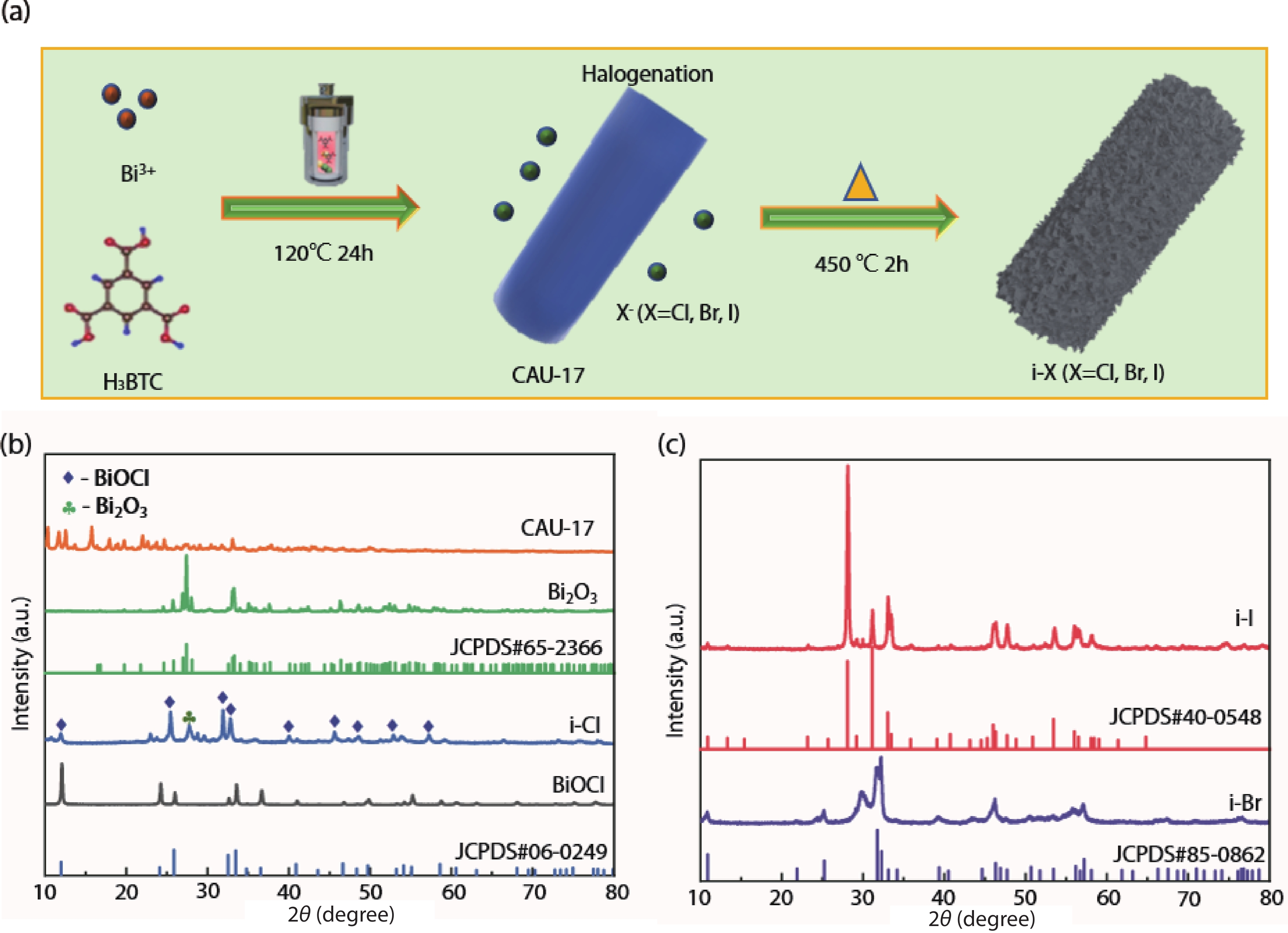
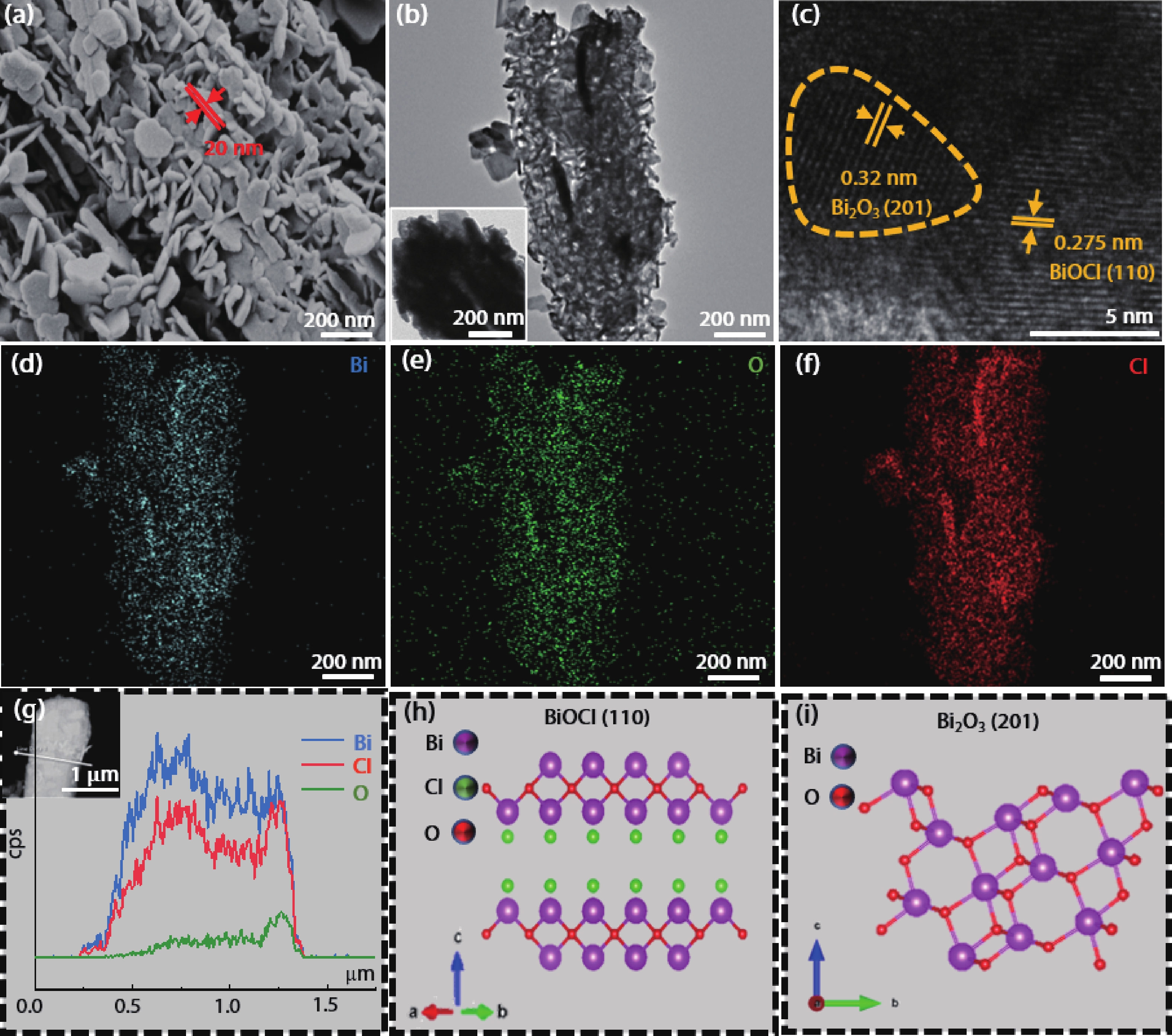
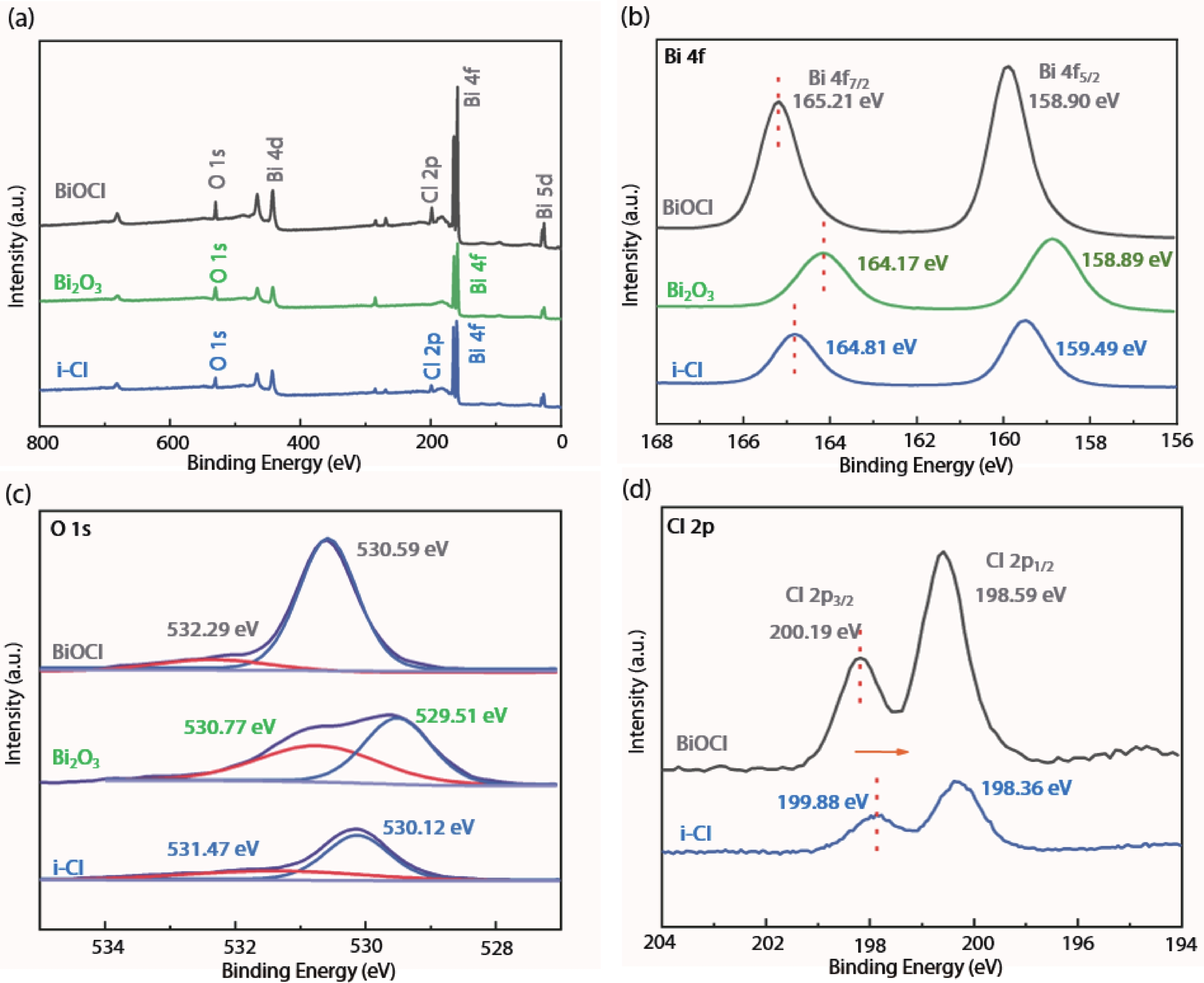
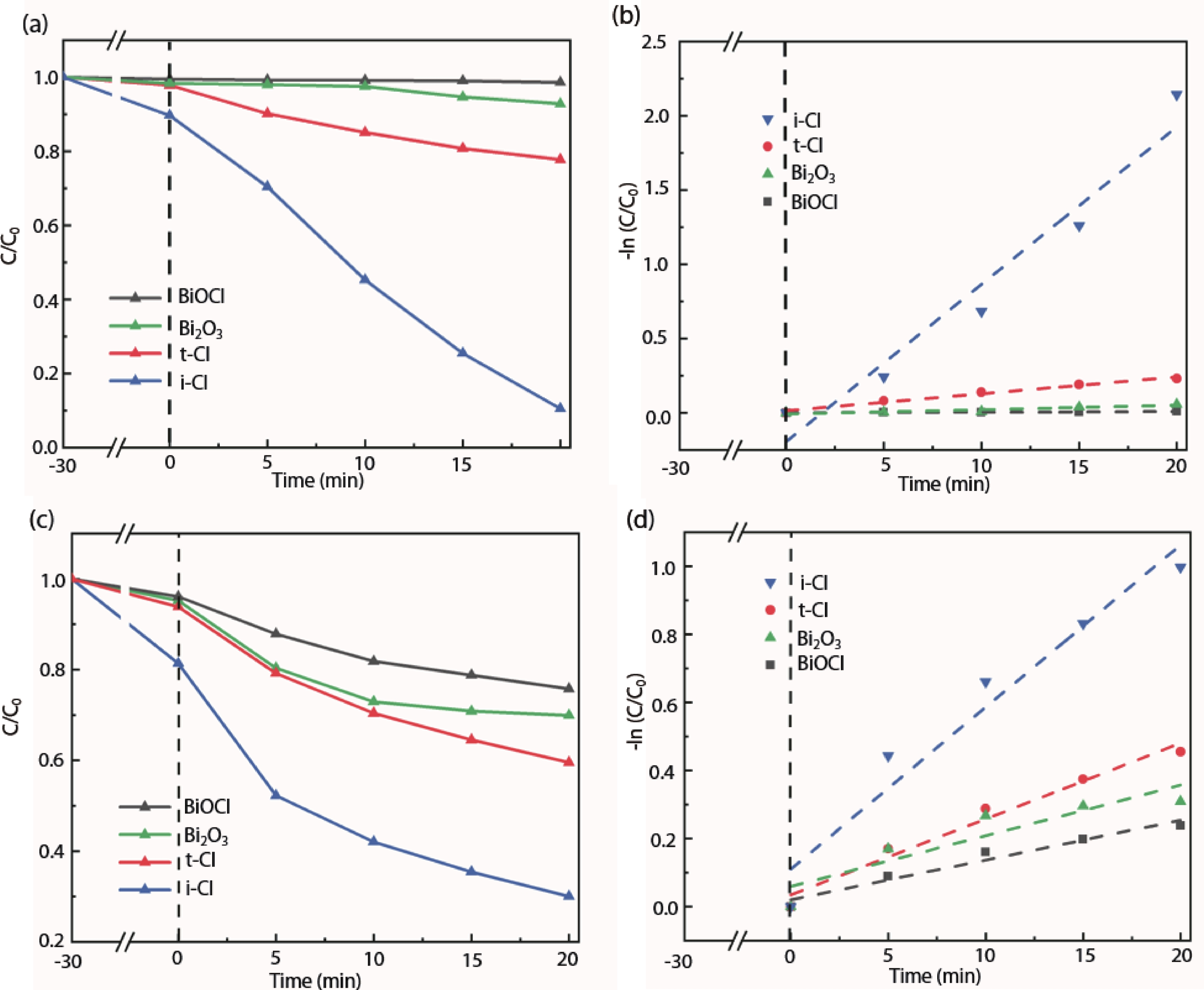
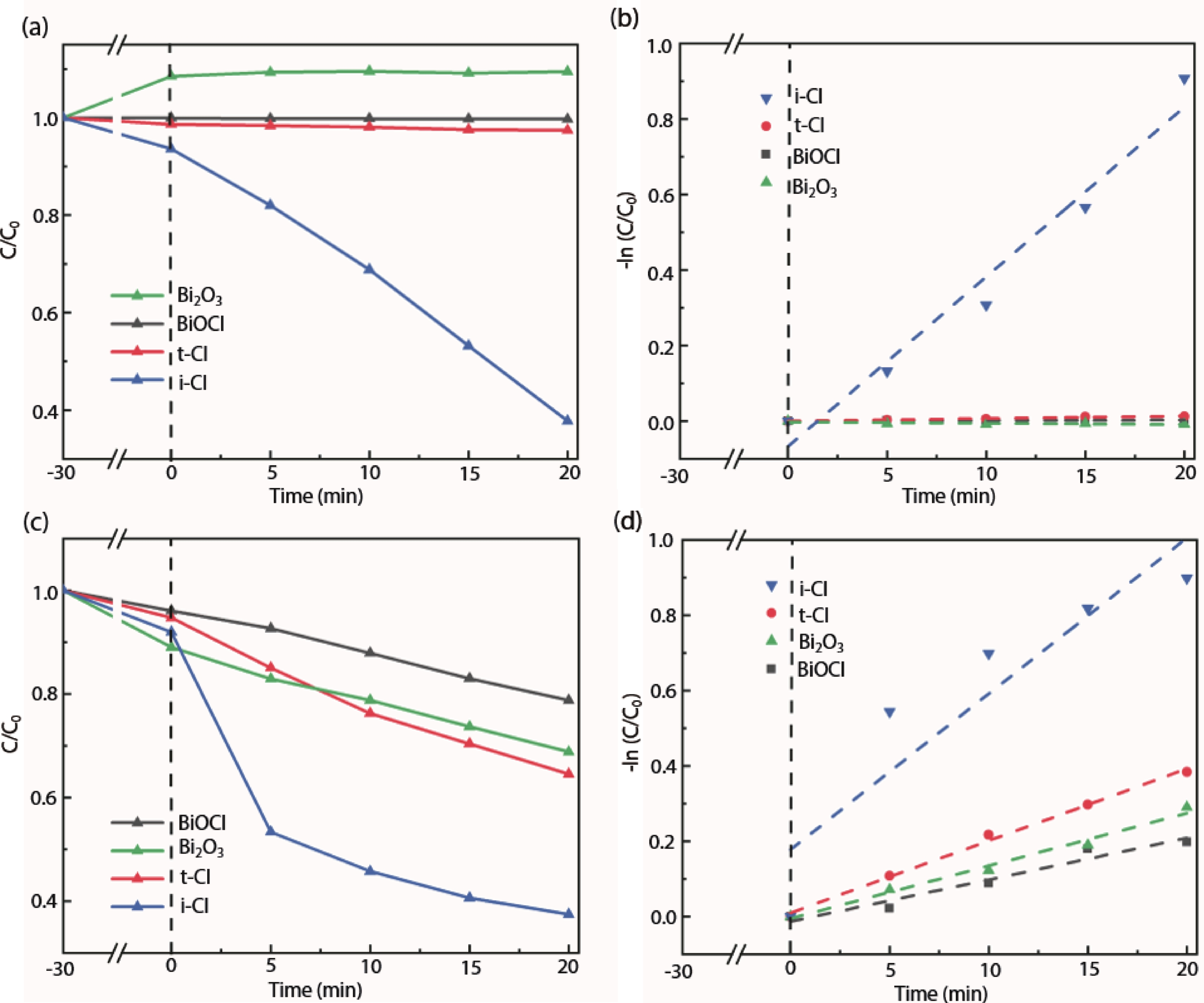
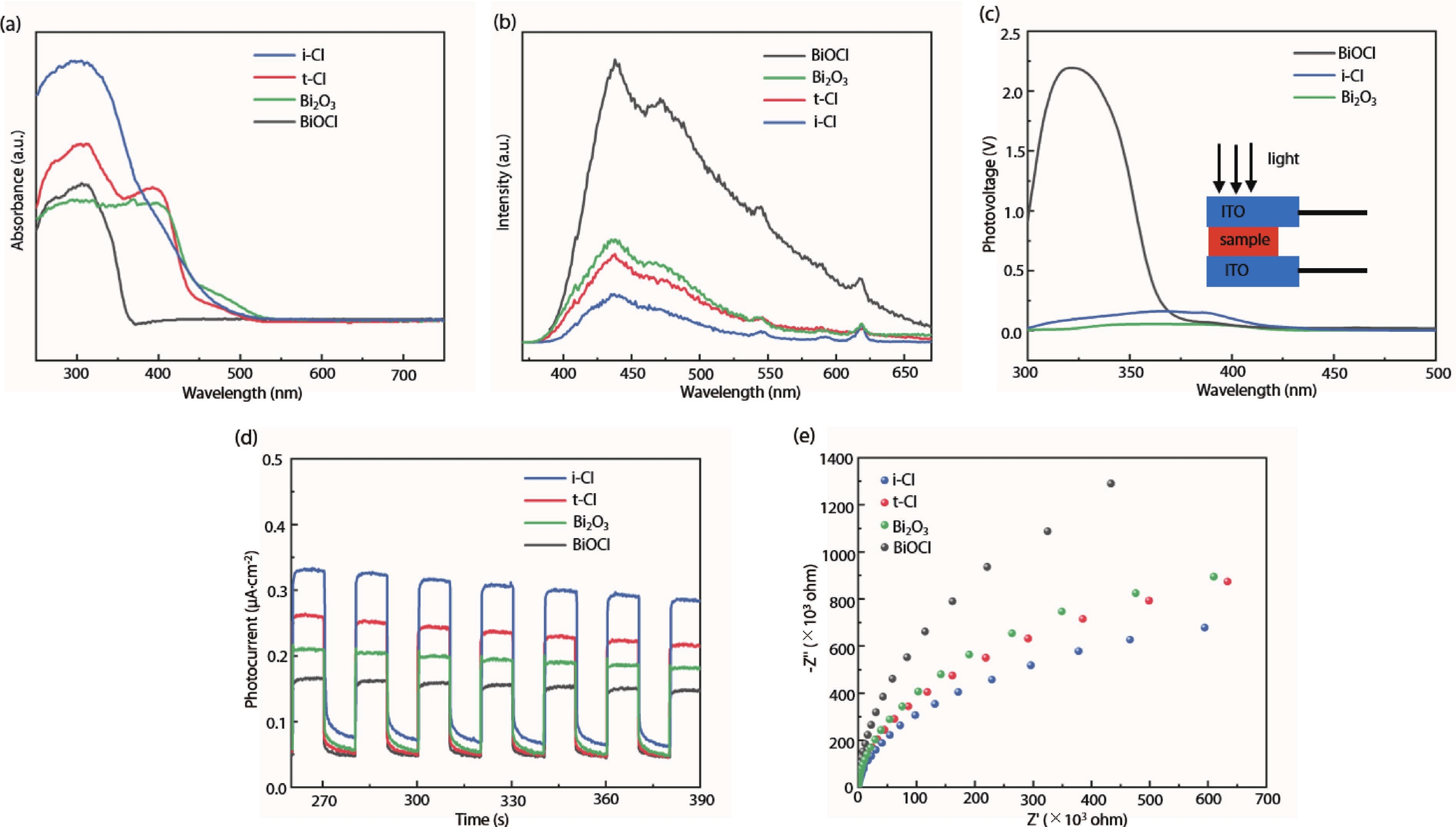
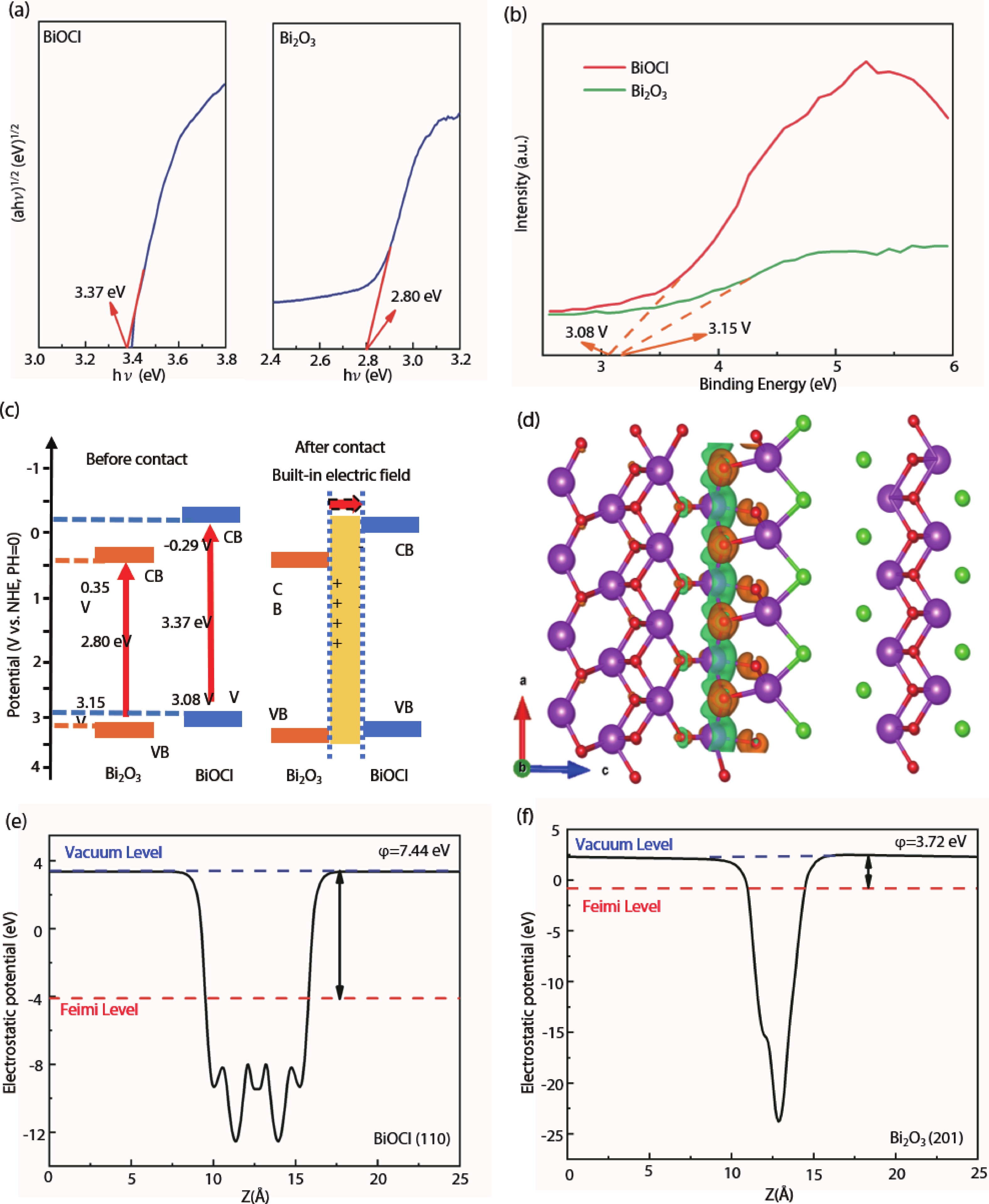
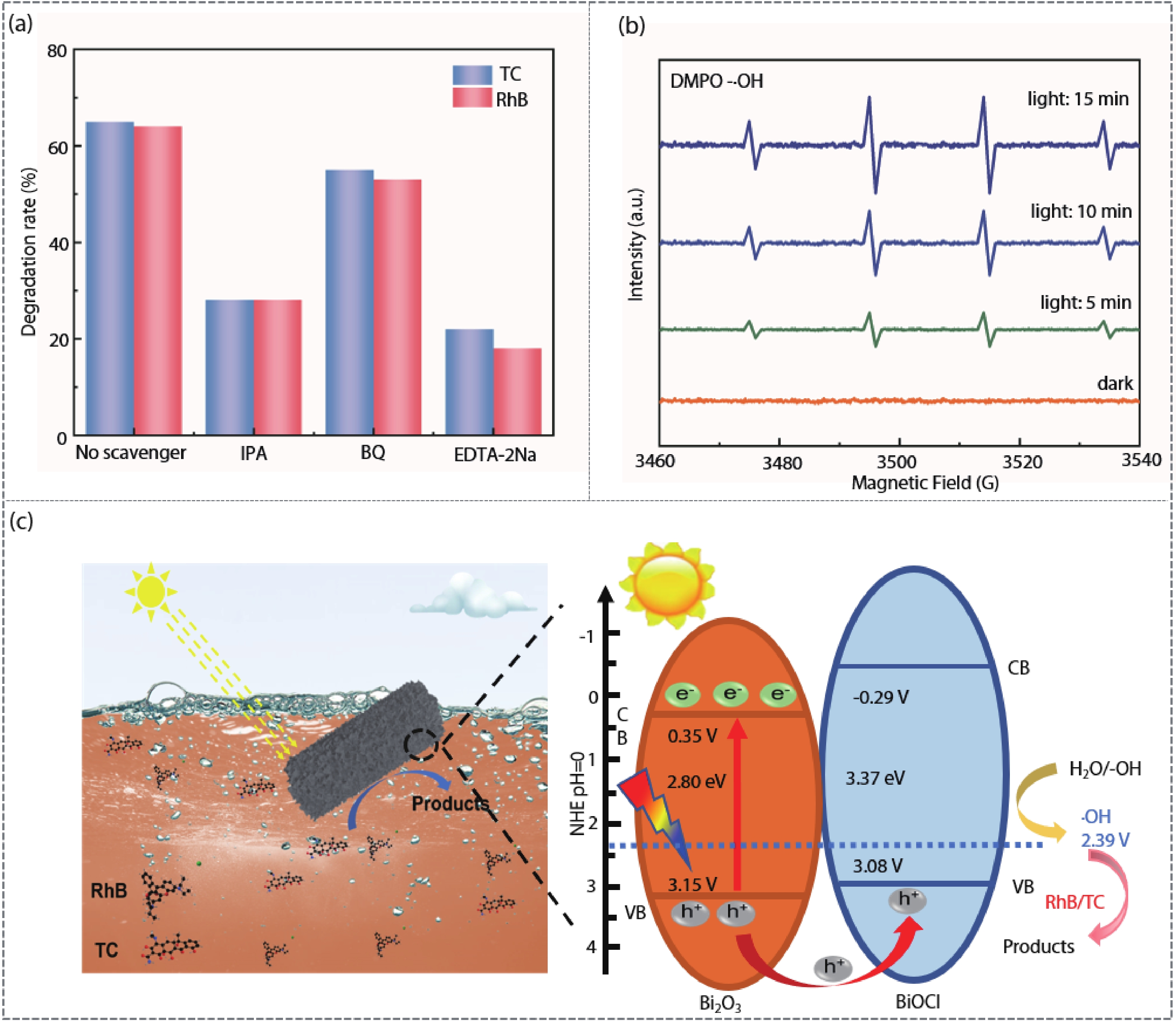










 Mengchi Liu:is a postgraduate student in the school of physics and electronic engineering, jiangsu university, majoring in physics. At present, the research direction is photocatalysis, and the specific content of the research is in-situ growth of Bi-based semiconductor heterojunction with Bi-MOF as a precursor, thereby improving the performance of photocatalysis sewage treatment
Mengchi Liu:is a postgraduate student in the school of physics and electronic engineering, jiangsu university, majoring in physics. At present, the research direction is photocatalysis, and the specific content of the research is in-situ growth of Bi-based semiconductor heterojunction with Bi-MOF as a precursor, thereby improving the performance of photocatalysis sewage treatment Yuanping Chen:received the Ph.D degree from Xiangtan University in 2007. He is currently a professor, doctoral supervisor, and a "double-creative talent" in Jiangsu Province, serving as Executive Vice Dean of School of Physics and Electronic Engineering. He is mainly engaged in the research of material properties, principles and applications, especially in the fields of topological materials, quantum transport, optoelectronic properties, etc. He has achieved a series of innovative results and published more than 100 high-level papers in Nat Energy, Nat Commun
Yuanping Chen:received the Ph.D degree from Xiangtan University in 2007. He is currently a professor, doctoral supervisor, and a "double-creative talent" in Jiangsu Province, serving as Executive Vice Dean of School of Physics and Electronic Engineering. He is mainly engaged in the research of material properties, principles and applications, especially in the fields of topological materials, quantum transport, optoelectronic properties, etc. He has achieved a series of innovative results and published more than 100 high-level papers in Nat Energy, Nat Commun





